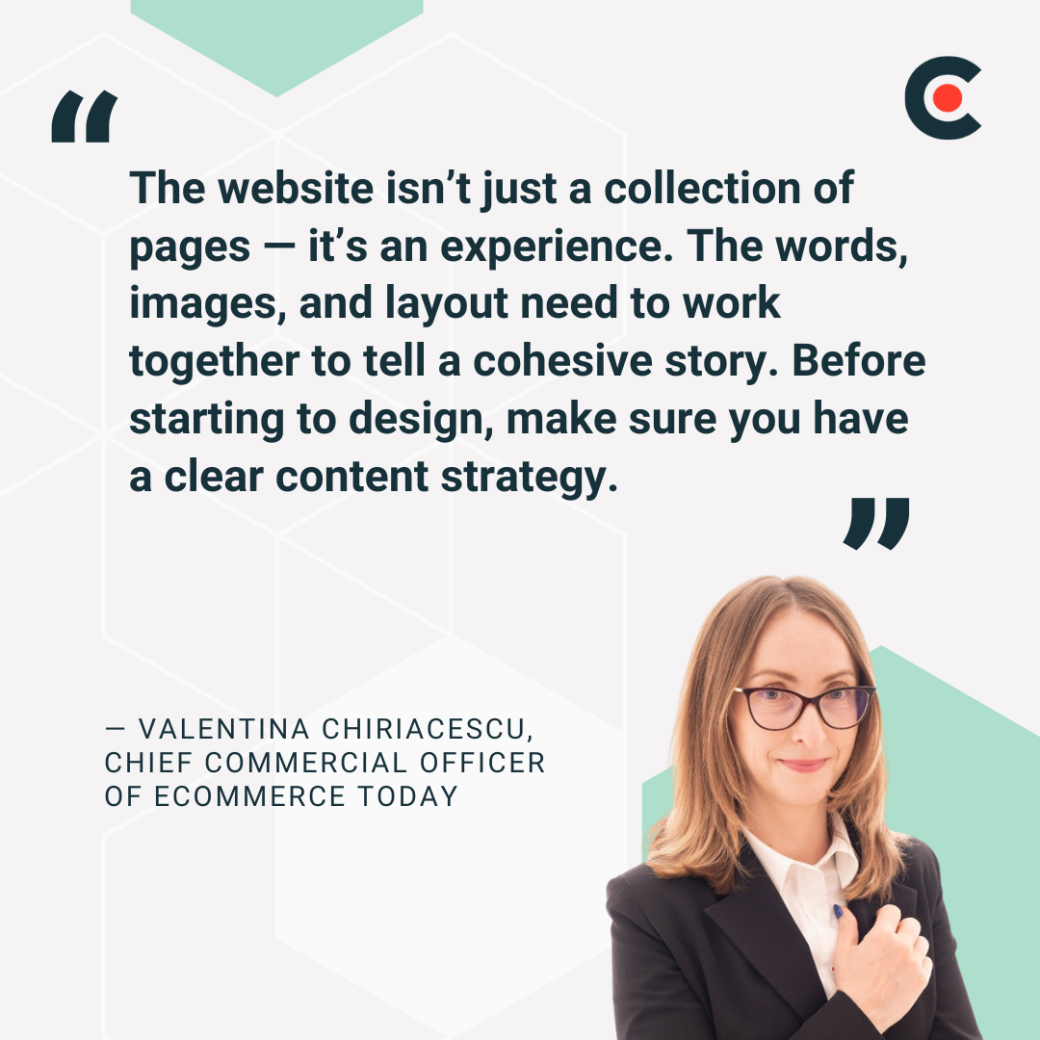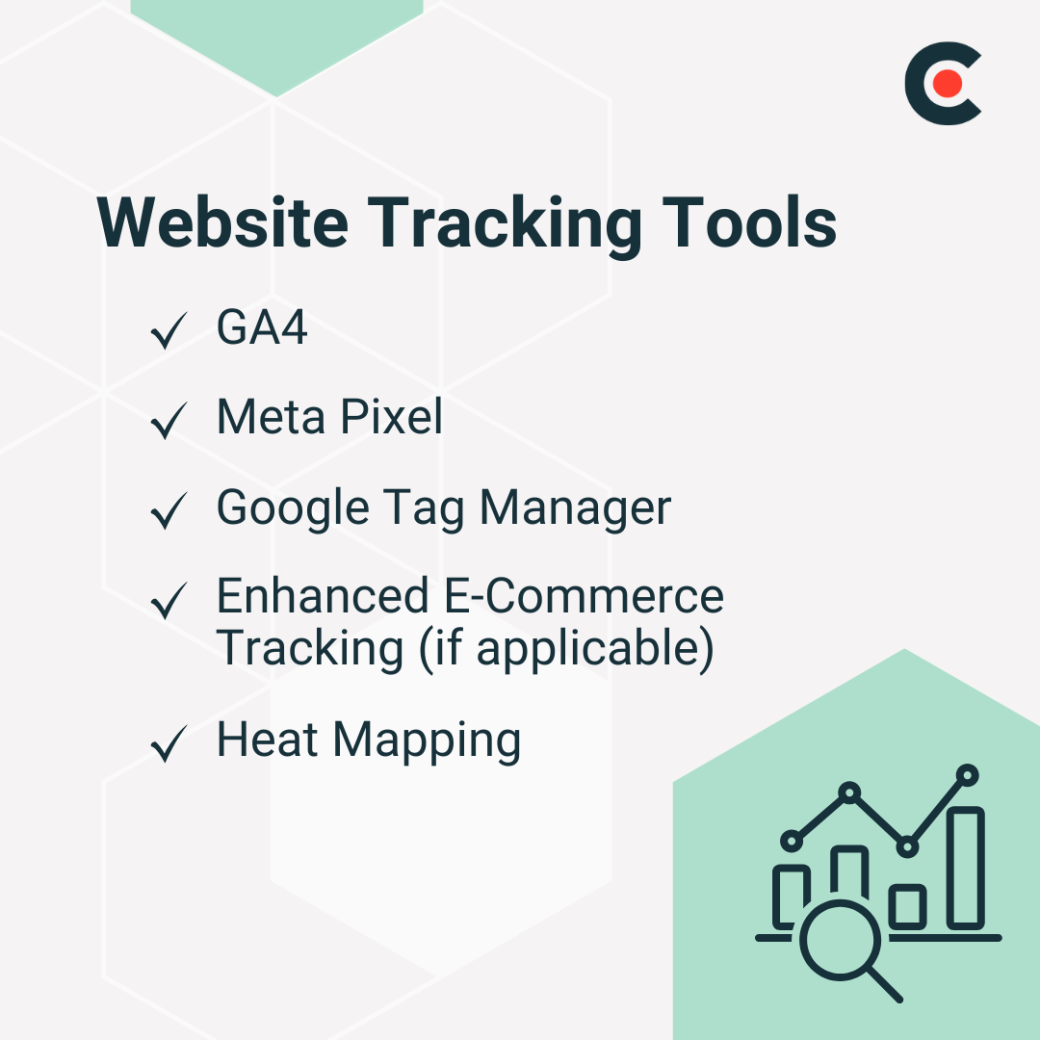![How to Create a Digital Marketing Budget [With Template]](https://img.shgstatic.com/clutch-static-prod/image/resize/715x400/s3fs-public/article/cbefcf801b6c486982d781482f9a654f.png)
![How to Create a Digital Marketing Budget [With Template]](https://img.shgstatic.com/clutch-static-prod/image/resize/715x400/s3fs-public/article/cbefcf801b6c486982d781482f9a654f.png)
Updated December 9, 2025
Having a great design and fast loading speeds will make a strong first impression on your target audience, but a strategic marketing and content strategy will turn visitors into loyal customers. Discover how to craft engaging content, develop a strong visual identity, and boost your site’s visibility from marketing experts.
There’s a lot to think about when designing a website. You want it to be fast, intuitive, and optimized for a seamless user experience. However, you also need the right content and marketing to engage your audience. After all, even the sleekest websites won’t hook users if they’re filled with fluff — or worse — just plain bad content.
It all starts with content that speaks to your audience. Whether you’re crafting your home page, service listings, or blog posts, your site should engage and persuade. The more relevant the content is, the more likely your audience will convert. Plus, search engines favor sites with high-quality content in the search results. If you want to rank near the top, excellent material will help you climb there.
Looking for a Digital Marketing agency?
Compare our list of top Digital Marketing companies near you
Once your content is ready, don’t forget about marketing. It helps customers find your content and understand what your brand is all about. Without a solid plan, even the most polished sites can easily be overlooked.
Luckily, you don’t have to figure everything out alone. We've gathered expert insights to help you create a winning marketing and content strategy for your web development projects.
It’s tempting to build your website first and worry about the content later. However, that approach often backfires. Without a visual and written content strategy, your site could feel chaotic and hard to navigate.
“Plan early and think holistically,” recommends Valentina Chiriacescu, Chief Commercial Officer of eCommerce Today. “The website isn’t just a collection of pages — it’s an experience. The words, images, and layout need to work together to tell a cohesive story. Before starting to design, make sure you have a clear content strategy.”

Start by considering your audience’s perspective. “What do they need to see, read, and feel to take action?” asks Michelle Clark, Senior Marketing and Engagement Manager at Expert Marketing Advisors. “Build everything around that.”
Take Nike, for instance. Its home page encourages visitors to shop for athletic clothing and shoes. How does it inspire this? With eye-catching images of people exercising in athletic clothing and bold slogans like “Play Hard. Dress Harder.”
Don’t just start churning out product listings or brainstorming catchy slogans for your home page. Instead, take the time to define your website’s core messages based on your goals and business values.
Once you know what you want to communicate, create key pages to share those messages. For example, Patagonia’s “Our Footprint” page highlights its commitment to eco-friendly practices.
Fill each page with engaging and persuasive copy. Be sure to speak your audience’s language with relatable phrases and jargon. Targeting Gen Z? Sprinkle in some meme references and slang. Meanwhile, older visitors may appreciate shoutouts to 1980s pop culture. Always include strong calls to action (CTAs) to drive conversions. For instance, “Schedule your demo today” is more compelling than “Get in touch.”
Pay attention to search engine optimization (SEO), too. Follow best practices, such as adding relevant keywords and writing detailed metadata. These steps will improve your website’s visibility in search engine results and boost organic traffic.
When you open a website, its visuals are the first thing you notice. A flashy header or a bold logo immediately sets the tone for the entire experience.
By choosing the right visual content, you can shape the user’s perception of your brand. Set yourself up for success by developing a consistent visual style from the get-go.
Every aspect should support your brand’s story — from the colors to the imagery and typography. Want to add custom graphics or interactive elements? They need to fit your style, too.
Establishing brand guidelines is key to maintaining a consistent aesthetic. These standards should cover all your visual content, including:
The earlier you hammer out these details, the easier it will be to create polished visual content.
While what your website says matters, how it communicates it is just as important. In addition to the human users you want visiting your website, search engine algorithms also need to understand your content if you want it to rank in the search results. That’s where planning for content optimization comes in.
“Content optimization is what keeps your site working hard after launch day,” explains Arham Khan, CEO at Pixated Agency. “We see too many brands take their website live and just hope for the best.”
Use these practical strategies to optimize your website:
You should also schedule regular content audits. Update your materials as needed, and scrap anything that’s outdated. That way, your website will also feel fresh and relevant.
Here’s a familiar nightmare for any business: You pour all your energy and time into a website, only to get barely a trickle of traffic. Avoid this frustrating scenario with a solid marketing strategy. The right plan will help you reach your audience and get the attention your website deserves.
A solid SEO strategy is critical for increasing organic traffic. Without it, your polished website might get buried on page 11 of the search results.
“Start with keyword research,” suggests Chiriacescu. “What are people actually searching for in your niche?”
You don’t need mind-reading skills to answer this question. Use keyword research tools to find your area's most popular search terms. Then, naturally incorporate these phrases into your content and metadata. It’s an easy way to attract visitors who are already interested in your content.
Of course, you also need to monitor your website’s SEO performance. “Set up tracking correctly from day one,” Clark says. “If you’re not measuring engagement and conversions, how do you know what’s working?”
Not sure how to get started? Khan recommends these tools:

"Without these applications, it will be difficult to measure traffic sources, user behavior, and campaign performance after launch,” Khan explains. “Proper tracking lays the groundwork for a data-driven marketing strategy, allowing brands to refine their efforts and maximize ROI."
Earning backlinks is a great way to improve your credibility and search rankings. But backlinks don't appear overnight. It takes time for other creators to discover your content and decide to link to it.
However, you’re not totally powerless. Consider creating in-depth content, such as how-to guides and white papers. Other sites may link to these materials, boosting your site’s authority and improving its online presence.
Every website has a distinct vibe that directly influences how visitors view your brand.
“Your website’s tone and brand come down to how you want people to feel when they land on your site,” explains Clark. “Whether it’s sleek and professional or bold and conversational, everything from your copy to your colors should reinforce that vibe.”
It’s not just about consistency. As Khan notes, this tone also needs to resonate with your customers. He says, "A brand's tone of voice isn't just about being professional or friendly. It's about speaking a language that connects with your specific audience.”
For instance, Olive Garden’s homepage is cozy and inviting. Close-up videos of pasta dripping with sauce entice customers looking for delicious Italian food. The company reinforces this tone with welcoming slogans like “The comfort you crave.”
Although your website and social media may seem separate, they are all part of your online presence. Linking them can help you engage customers more effectively.
Look for opportunities to integrate these platforms. For instance, Khan recommends adding sharing buttons to blog posts and other content. He notes, “These buttons encourage visitors to amplify your content, increasing reach and engagement.”
Khan is also a fan of integrating social media posts into websites. “Embedded feeds — particularly Instagram and TikTok for lifestyle brands — keep the site dynamic by showcasing fresh content and driving engagement,” he says. That way, customers don’t need to check multiple platforms to see what your brand’s latest content.
Consider featuring user-generated content from social media, too. “This content provides social trust,” Khan says, “which builds trust and enhances credibility. Both of these are essential for conversions.” For example, you could embed customer testimonials from YouTube on your website.
Do customers need to log into your website? This is another opportunity to integrate it with social media. As Chiriacescu observes, “Letting users sign in with Facebook or Google speeds up the process and reduces friction.”
And be sure to announce your website’s launch on social media. This is an easy way to attract traffic and spread the word about your brand.
Paid advertising can significantly boost traffic, especially for new sites. Start by defining campaign goals and choosing relevant platforms. Do you want to increase sales? You could create Google Ads to promote your products. If you’re aiming to generate leads, LinkedIn Ads could be helpful.
You’ll need to develop landing pages no matter which platform you choose. Include clear CTAs to guide visitors to the next step. Many platforms also let you use retargeting to reach people who have already engaged with your brand.
Even the most tech-savvy employees need a little help learning new platforms. Train your internal team on website management, analytics tools, and updates. You should also share content and SEO best practices with your marketing teams.
Consider organizing joint training sessions so your customer support, marketing, and sales teams are on the same page.
A marketing and content strategy are critical aspects of all web development projects. They’ll help you draw customers to your site and provide great content once they get there.
Of course, none of these activities are a one-and-done deal. “One of the biggest mistakes we see is launching a website and assuming the work is done,” Chiriacescu observes. “A great site is never ‘finished.’ Regular A/B testing and performance monitoring make the difference between a website that sits there and one that actively grows your business.”
Are you ready to take your website to the next level? Download our in-depth web development checklist to plan your next steps.
![How to Create a Digital Marketing Budget [With Template]](https://img.shgstatic.com/clutch-static-prod/image/resize/715x400/s3fs-public/article/cbefcf801b6c486982d781482f9a654f.png)

